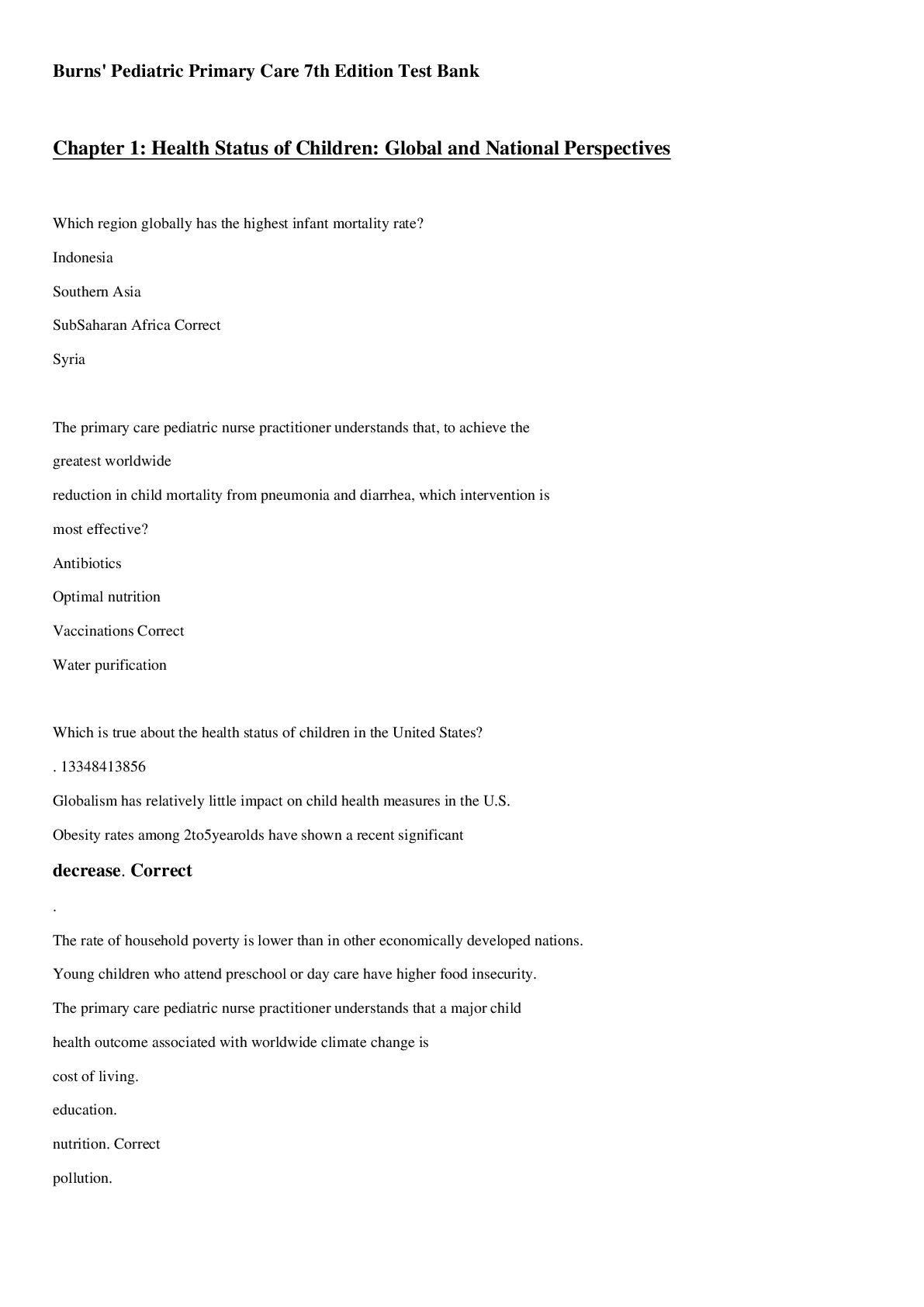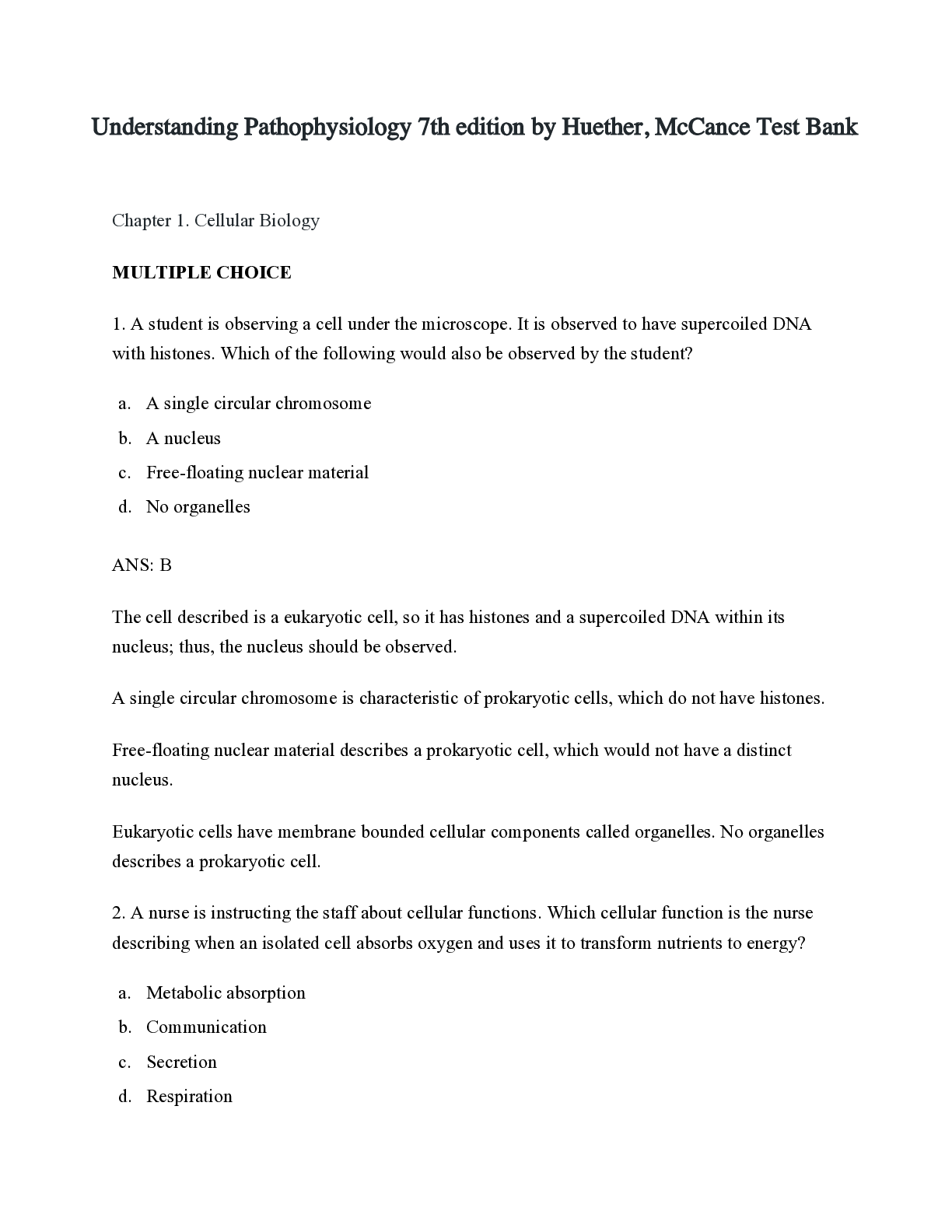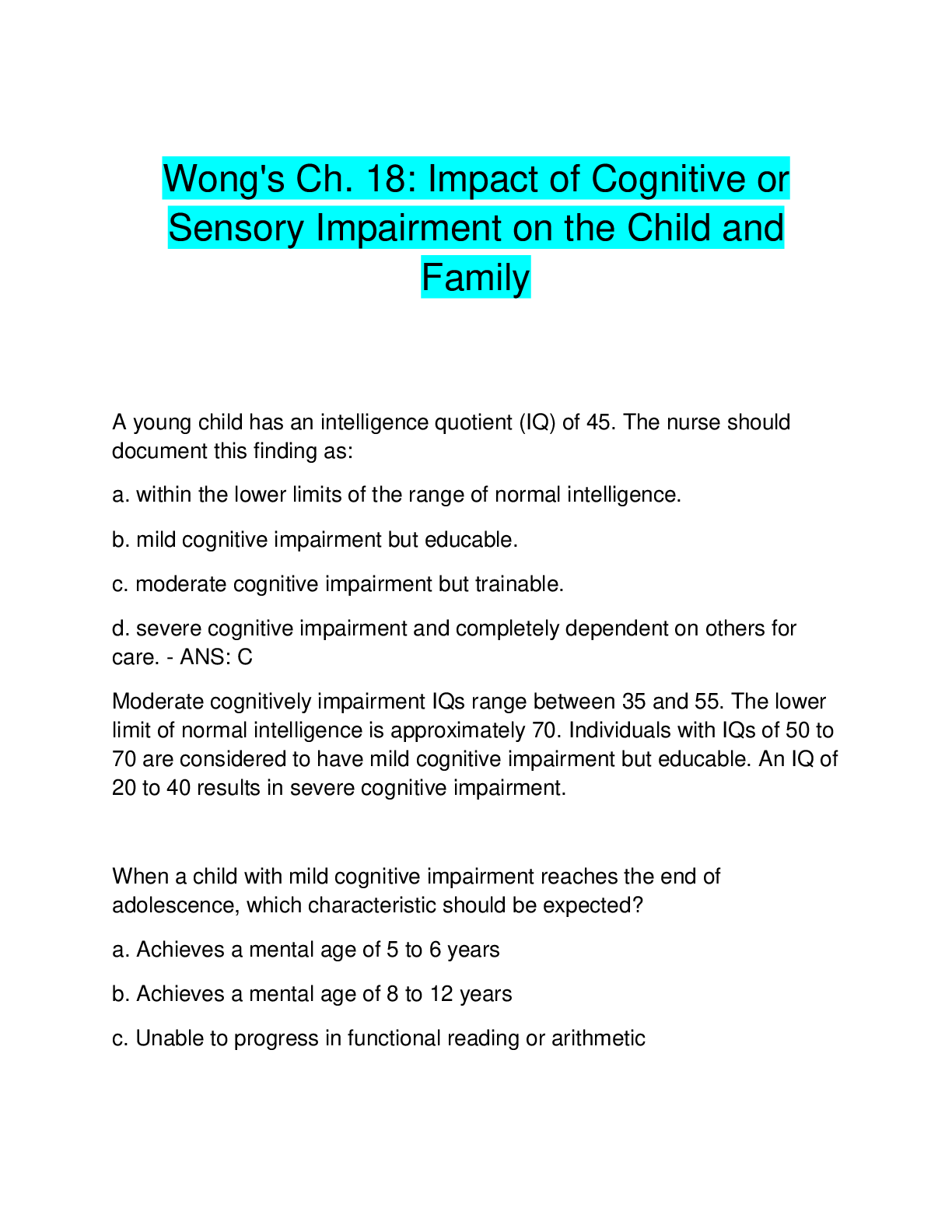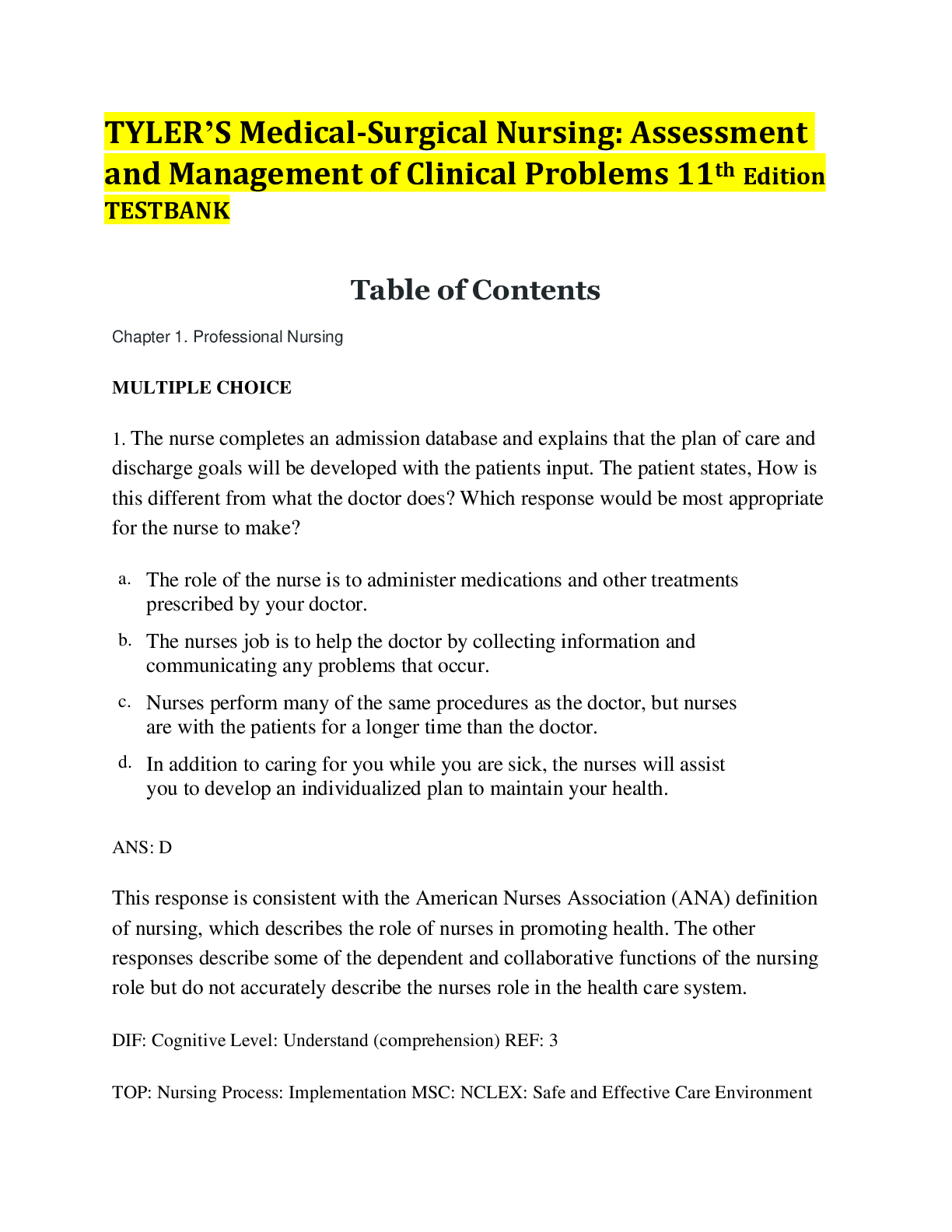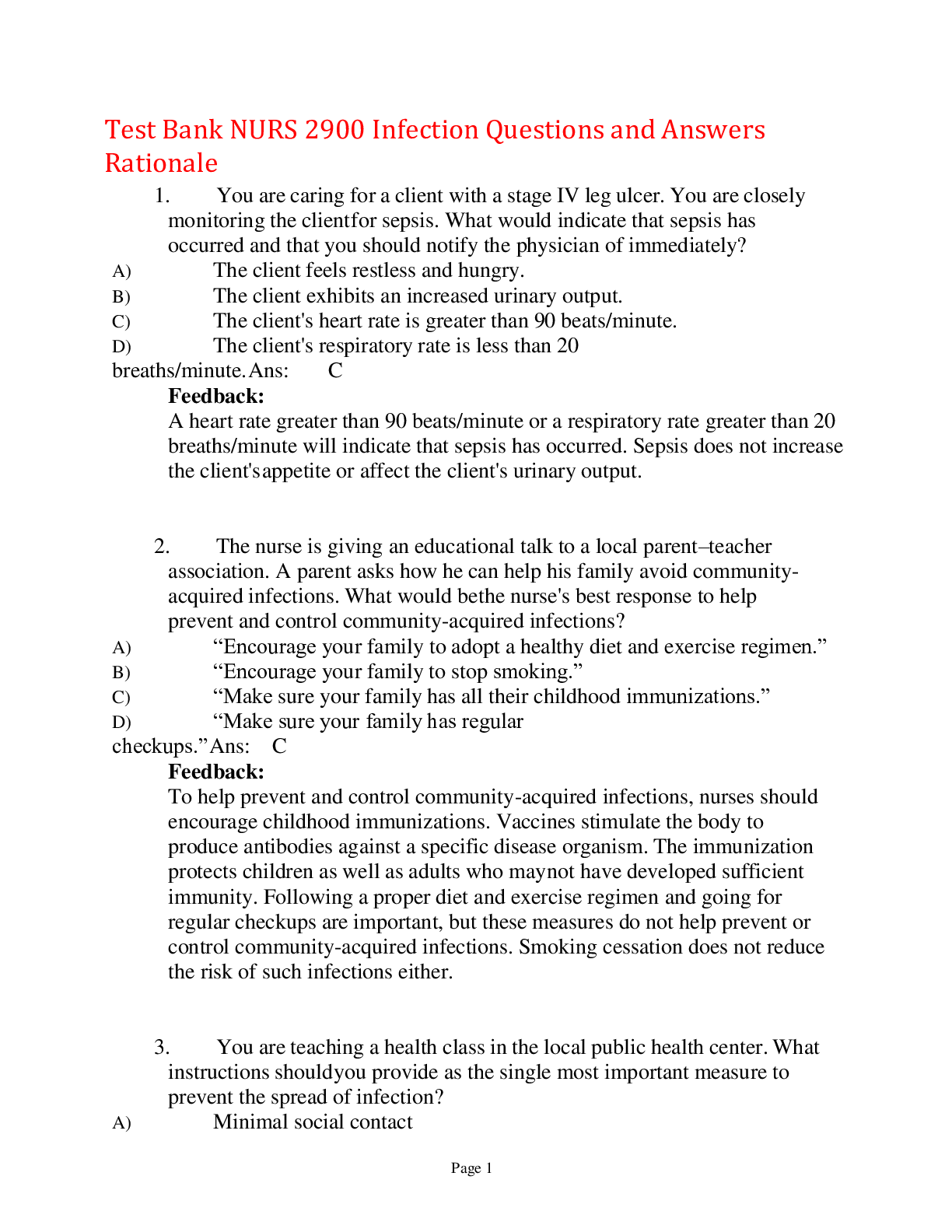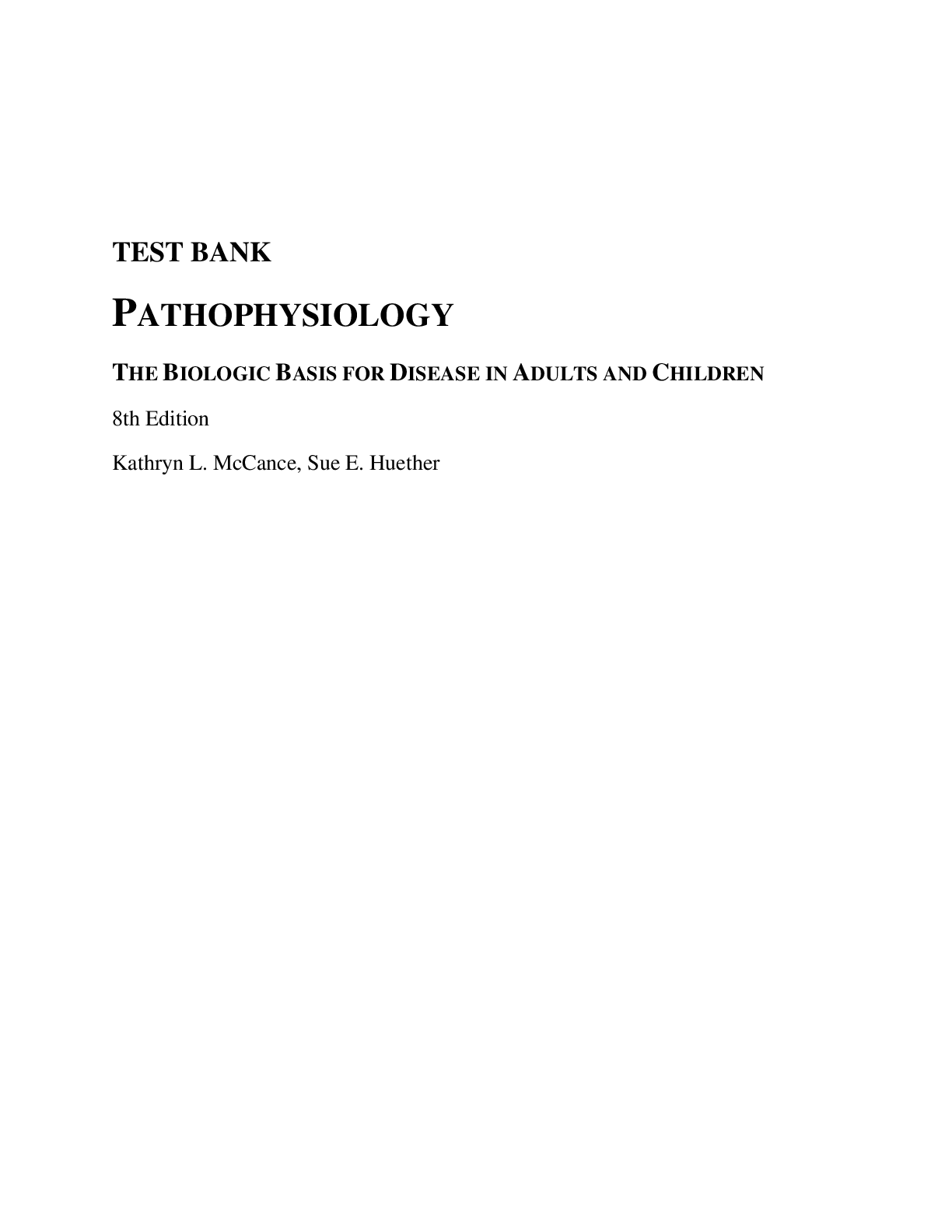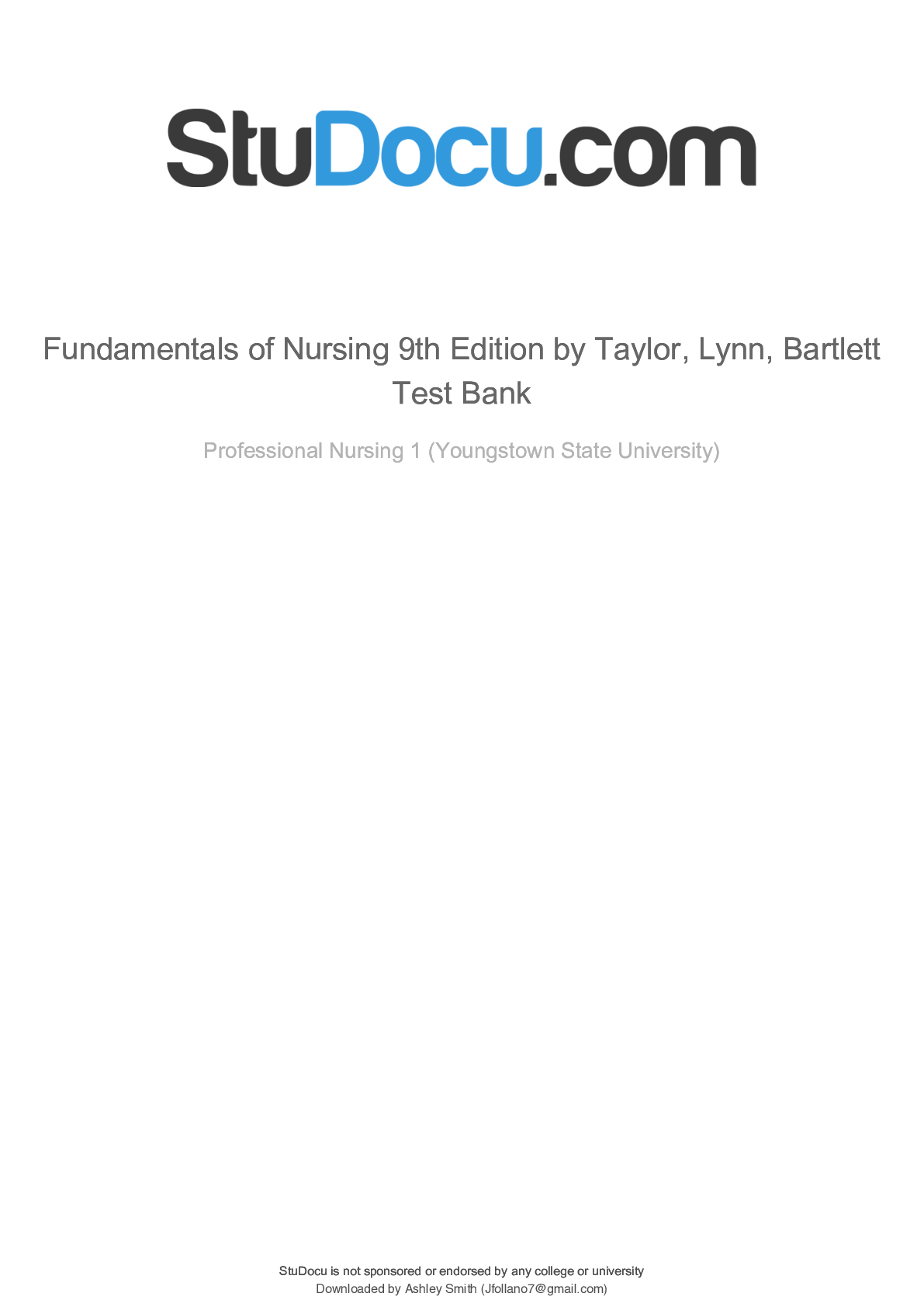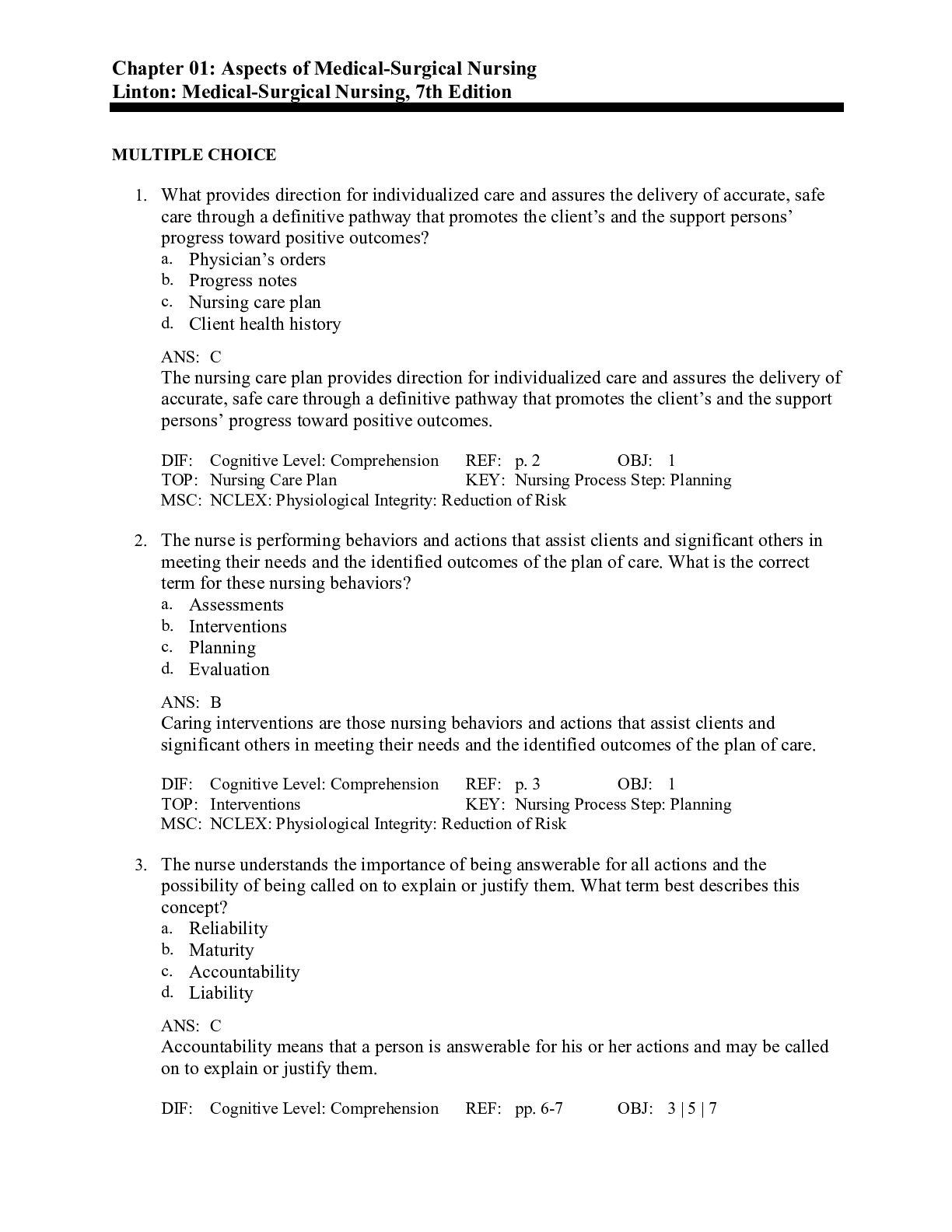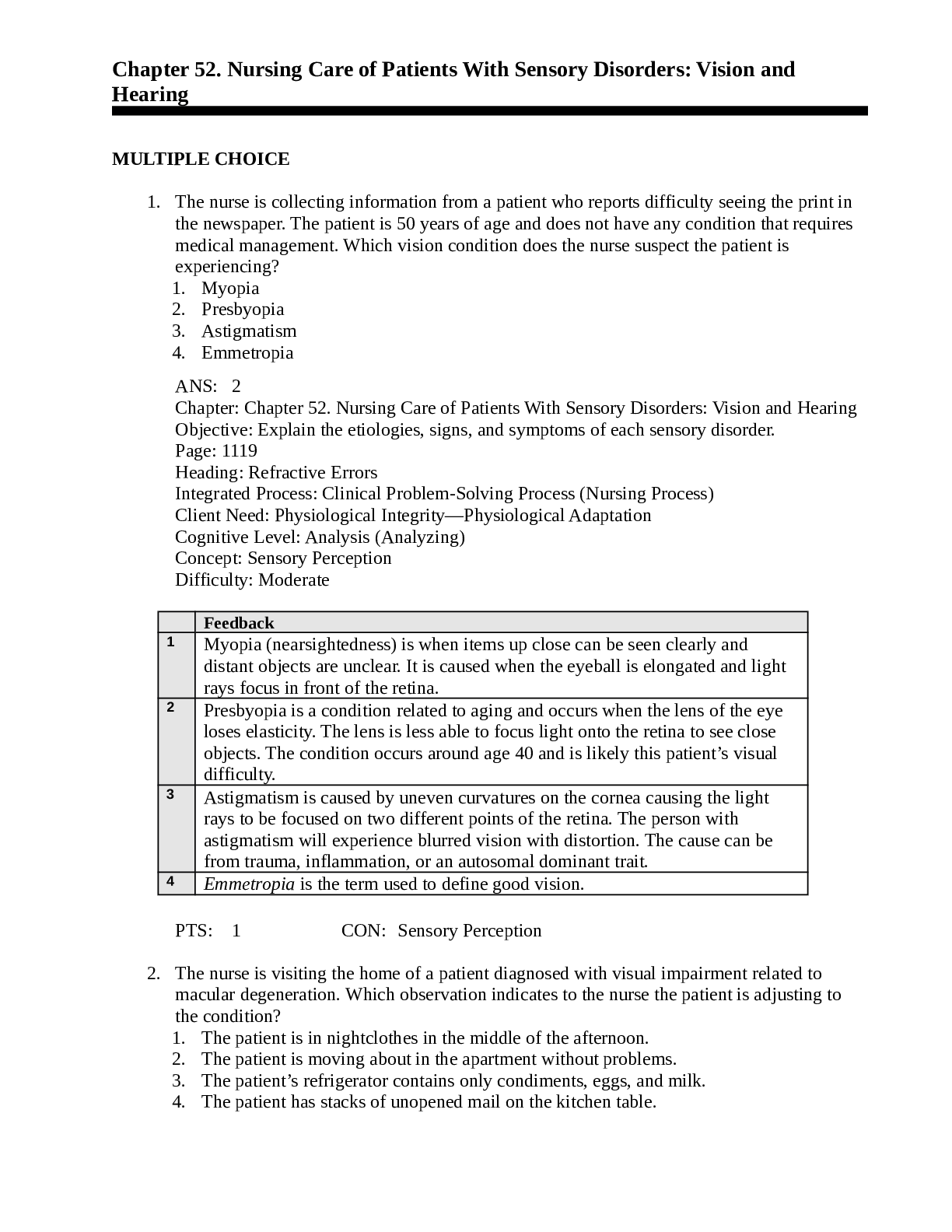Chapter 67: Care of Patients with Diabetes Mellitus Test Bank
Document Content and Description Below
1. In preparing a staff in-service presentation about diabetes mellitus, the nurse includes which information? a. Diabetes increases the risk for development of epilepsy. b. The cure for diabetes i... s the administration of insulin. c. Diabetes increases the risk for development of cardiovascular disease. d. Carbohydrate metabolism is altered in diabetes, but protein metabolism is normal. 2. A client with diabetes asks the nurse why it is necessary to maintain blood glucose levels no lower than about 60 mg/dL. Which is the nurse’s best response? a. “Glucose is the only fuel used by the body to produce the energy that it needs.” b. “Your brain needs a constant supply of glucose because it cannot store it.” c. “Without a minimum level of glucose, your body does not make red blood cells.” d. “Glucose in the blood prevents the formation of lactic acid and prevents acidosis.” 3. The nurse is monitoring a client with hypoglycemia. Glucagon provides which function? a. It enhances the activity of insulin, restoring blood glucose levels to normal more quickly after a high-calorie meal. b. It is a storage form of glucose and can be broken down for energy when blood glucose levels are low. c. It converts excess glucose into glycogen, lowering blood glucose levels in times of excess. d. It prevents hypoglycemia by promoting release of glucose from liver storage sites. 4. A client with untreated diabetes mellitus has polyuria, is lethargic, and has a blood glucose of 560 mg/dL. The nurse correlates the polyuria with which finding? a. Serum sodium, 163 mEq/L b. Serum creatinine, 1.6 mg/dL c. Presence of urine ketone bodies d. Serum osmolarity, 375 mOsm/kg 5. A client with diabetes has a serum creatinine of 1.9 mg/dL. The nurse correlates which urinalysis finding with this client? a. Ketone bodies in the urine during acidosis b. Glucose in the urine during hyperglycemia c. Protein in the urine during a random urinalysis d. White blood cells in the urine during a random urinalysis 6. A young adult client newly diagnosed with type 1 diabetes mellitus has been taught about selfcare. Which statement by the client indicates a good understanding of needed eye examinations? a. “At my age, I should continue seeing the ophthalmologist as I usually do.” b. “I will see the eye doctor whenever I have a vision problem and yearly after age 40.”c. “My vision will change quickly now. I should see the ophthalmologist twice a year.” d. “Diabetes can cause blindness, so I should see the ophthalmologist yearly.” 7. During assessment of a client with a 15-year history of diabetes, the nurse notes that the client has decreased tactile sensation in both feet. Which action does the nurse take first? a. Document the finding in the client’s chart. b. Test sensory perception in the client’s hands. c. Examine the client’s feet for signs of injury. d. Notify the health care provider. [Show More]
Last updated: 2 years ago
Preview 1 out of 22 pages

Buy this document to get the full access instantly
Instant Download Access after purchase
Buy NowInstant download
We Accept:

Reviews( 0 )
$16.50
Can't find what you want? Try our AI powered Search
Document information
Connected school, study & course
About the document
Uploaded On
Aug 23, 2021
Number of pages
22
Written in
Additional information
This document has been written for:
Uploaded
Aug 23, 2021
Downloads
0
Views
86

